South Garden Area
I advocate the use of open raised beds for home gardening. I’ve been working with open beds for over 30 years. There are lots of advantages over both conventional planting in rows, and also over assembled, boxed in beds. I’ve got two plots with open beds. The area I call the south beds is a very geometric layout of 18 beds, each about 5 feet wide by 20 feet long.
North Garden Area
The north bed area is a lot more haphazard. It borders on a weedy, woody area “where the wild things are”. Most of the beds in the north area are 10 feet long and five feet wide. I thought an interesting post for July might be to show what’s going on in each of the beds.
Coles, Sweet Potatoes, Empty Garlic Bed
The bed in the foreground has cabbages, kohlrabi, Chinese cabbages, Pac Choi, fennel, nasturtiums and some volunteer mustard. The next bed with the black plastic has sweet potatoes. The third bed is where I just harvested garlic. It still has a few lettuces in it. I’ll harvest those, level off the bed and plant a fall crop of beets and carrots. Open beds make succession planting easy.
Potatoes, More Potatoes, Rhubarb and Raspberries
Next we have two beds of potatoes and a more perennial bed of rhubarb and raspberries. I’ll probably relocate the rhubarb and raspberries this fall. They’ve been in that spot since 2004. It’s time for a change.
Peas, Onions, Strawberries
The trellised bed has peas, which are just about finished producing. I’ll rip all the structure out and plant a fall crop of green beans and other greens in that bed. In front of that are red and yellow storage onions. The closest bed is a three year old bed of strawberries, from which any baby plants will be used to start a bed this fall or early next spring. I recently bought that green wheeled cart with a tractor seat. I’m liking it and using it a lot.
Strawberries, More Strawberries, Squash and Cukes
Here are two beds of strawberries, new this year, and a bed of squash and cucumbers. The big hubbard and kuri squash are sprawling on the ground. The smaller squash and cukes are trellised.
Coles, Herbs, Zukes and Melons
The furthest bed is zucchini, and melons, along with some mustard and cilantro that I’m letting go to seed, a rather unkempt but very productive herb bed, and a bed of coles – cabbage, cauliflower, broccoli and Brussels sprouts.
Tomatoes and Two Beds of Corn
Lastly on the south side are tomatoes and two beds of corn. I have to fence the corn in, otherwise the thunderstorm winds easily topple the stalks over.
Potatoes, Shallots
The far more shaggy north garden area contains my compost pile. It’s barely visible, but capped by two buckets in the upper left side. In front of that is a bed of potatoes. Directly in front is a half bed of shallots and I’ve got a couple blackberry starts doing pretty well in front of those. I’ve got a huge crop of girasole (Jerusalem artichoke, sunchoke, Helianthus tuberosus,) growing in several areas on the north side. We don’t use them as much as we should. Once you’ve got them, they are here to stay.
Candy Onions
Behind the shallots I’ve got a bed of candy onions, bordering next to the wild lands. Fortunately, the critters, so far, don’t seem to have a penchant for onions.
Asparagus, Peppers, Tomatoes, Okra and Leeks, Comfrey
Rounding out the garden tour is more girasole. Next to that, okra and leeks (which are past due for transplanting to a larger space). Behind the leeks is a bed of comfrey, which is spreading well outside its borders, but I’m encouraging it, as it is a miraculous plant that I’m using a lot as a mulch and compost. Next to this are beds of peppers and eggplants and more trellised tomatoes. And finally on the left, our almost 30 year old bed of asparagus.
Open beds offer more flexibility than other systems. They are relatively easy to maintain, and they truly do produce a heck of a lot of food in a pretty small area.

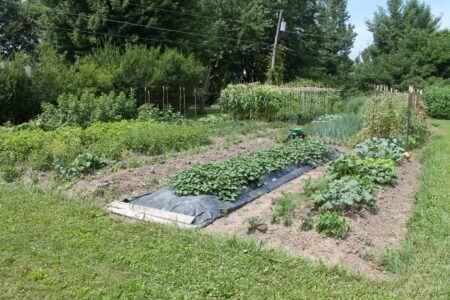
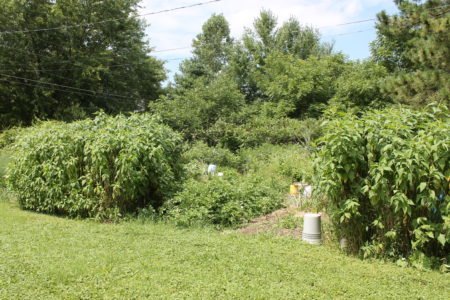
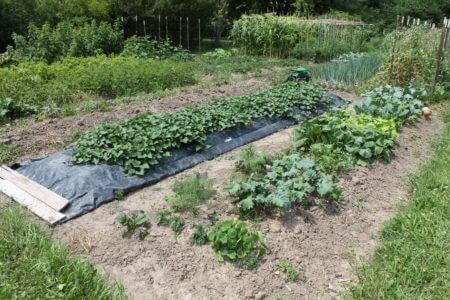
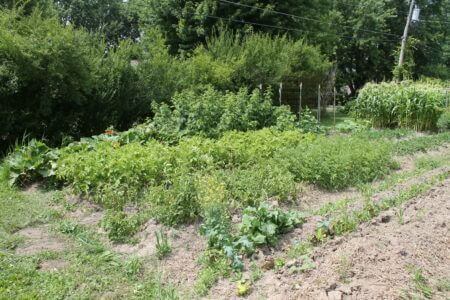
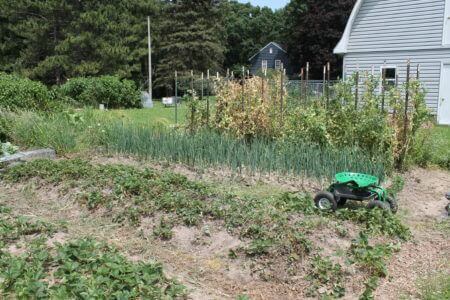
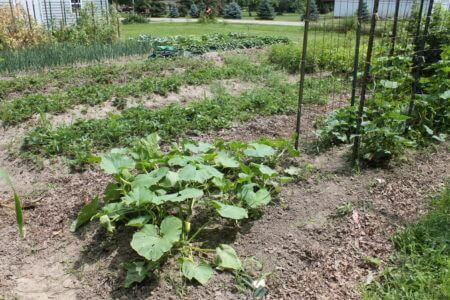
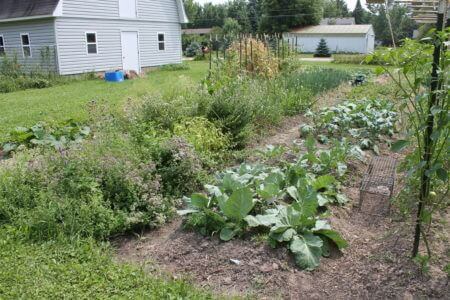
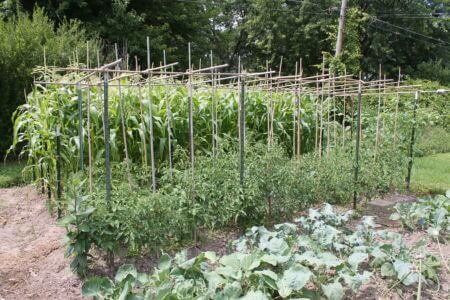
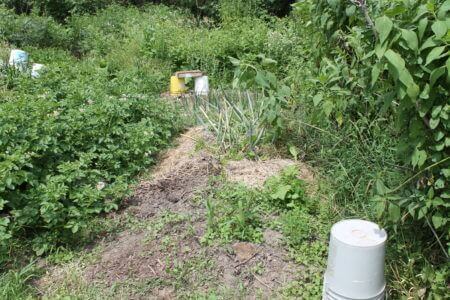
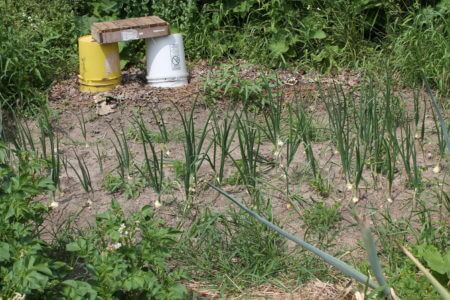
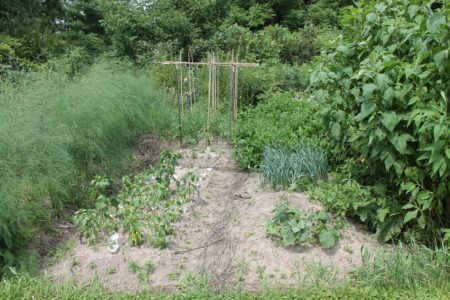
Fabulous garden Noel and Judy!!! 🙂
Beautiful!